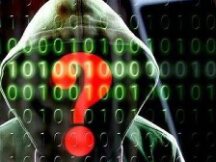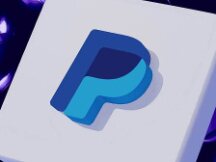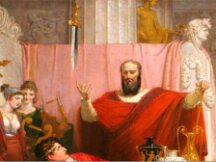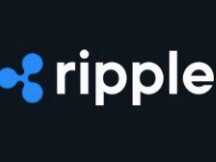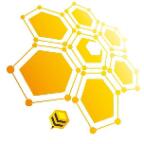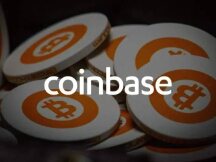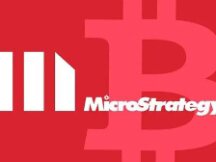What is Polygon's goal for obtaining the Mir protocol?
Investments and mergers and acquisitions abound in the centralization of the crypto industry, and today such financial manipulation has started to spread into the realm of decentralization. , and there is a strong tendency to strengthen the impact of capital.
On November 26, Polygon acquired Mir Protocol, a start-up focused on ZK rollups, for $ 400 million. Why did Polygon, the solution provider for the Layer 2 blockchain network, kick start at a higher cost? This could be linked to the subsequent announcement of the new merger.
Polygon has always believed that ZK (Zero Knowledge) cryptography is the ultimate blockchain scalability game.The network spans around ZK technology and includes all solutions that can use this technology to improve network scalability to create a standard network focus 2 for ZK.
In August of this year, Polygon announced that it would acquire Hermez Network, the Ethereum L2 extension solution, for $ 250 million, and change its name to Polygon Hermez. Then Polygon released the zkEVM virtual machine, developed a non-stop solution Polygon Maiden was compatible with Ethereum and an open source version. Polygon Nightfall's body focuses on proprietary solutions, adding proprietary technology for seamless integration while incorporating scalability technologies.
Polygon creates its own ZK technical barrier through various means such as investment and collaboration.As part of the acquisition of the Mir protocol, the Hufu research institute decided that it plans to develop a new project, Polygon Zero, based on the zero-sum test of Polygon, the first technology. It is not yet clear what kind of polygon and Mir process may collide with in the Ethereum Layer 2 scaling solution. "However, it is clear that the ZK rollup is now more important than the Ethereum Blockchain network. Layer 2. Solutions. "
The Tiger Symbol Research Institute has discovered that the Mir protocol holds large sums of money in projects where Polygon has invested heavily in procurement. This is expected to bring new releases to the Polygon and ZK stacks and the entire Layer 2 market. Ahead of the Polygon Zero announcement, a report from the Tiger Symbol Research Institute outlined the key points of the Mir protocol acquisition. by the Society.
Mir "Recursive Zero-Knowledge Proof" optimise ZK-Proof.
According to a report by Hufu Labs,Mir is a zero proof technology (ZK-proof) Ethereum extension prototype.ZK-proof is a cryptographic tool that can be used to create ZK-rollup solutions. When doing business, there is no need to publish all data exchanges to Ethereum, reducing Ethereum block usage, scalability, and low electricity costs.
It should be noted that Mir supports traditional business applications and also provides privacy protection for users. At the same time, it reduces the size of the state by a factor of 1000 compared to Ethereum's core network. This means that historical data extracted from Mir nodes is compared to data from the Etherscan chain. Mir phased scaling increases access to all network interfaces without compromising security, integration and distribution.
Based on public data, Mir's system creates zero-knowledge credentials, allowing small-scale credentials to analyze Ethereum activities. Polygon also believes Mir has the fastest ZK-proof tech release. This means that Mir can generate certificates faster from a single certificate and be more commercially viable. According to a report by the Tiger Symbol Research Institute, key research points on the Mir contract include:What is Mir doing for certification? How to reduce the efficiency of equipment while maintaining efficiency? How to achieve recursive zero-knowledge proof? How do you know the scalability of Ethereum Layer 2?
Reduce report size
In normal blockchains like Ethereum, validating a transaction requires accessing the state of each account interacting with the exchange, so a node must maintain the state (e.g. state value) of all active accounts. However, as your account grows, access and storage will be more expensive.
Thus, Mir can exchange data, the number of out-of-chain and the amount of money available to individuals can be stored on a personal device. Shared funds are stored on IPFS or some other level. This means that you don't have to keep your data in the account and you don't need to know where the data is stored. Mir is based on the "Merkel Tree" method and only provides terms that have a positive impact on a health account. It can be seen that the size of the MIR state (i.e. the amount of state required by the user) is greatly reduced depending on the completion of the account information exchange with the chain.
How to validate the state of the account? Mir uses zero knowledge proof.
Recursive zero-knowledge proof
All of Mir's operations are identified by null evidence. However, the cost of filtering to identify zero-knowledge certifications is still high, and Mir results are lower than traditional chains if users are required to recognize credentials for each interchange. Therefore, Mir can develop a combination of zero-knowledge proofs (recursive ZK proofs) to provide cryptographic data with a single proof and validate the authenticity of industry certification. In other words, the validator's "proof" can verify "a layer of transactions" and then prove to another network that this "normalization process" is valid, if so, we can extend Mir to create recursive certificates using whatever is available. xam ..
Accreditation by recursive certification has two advantages.
First, user validators are not required to validate transaction history when they join a network.Existing chains will be restricted to allow new equipment users to comply with the new chain condition. New Mir Validators only need to upload three pieces of content for review, and the uploaded content includes an Addable Log (Engagement) that stores the order of each file, above, and the logs created by the process. Create a mask of vitality. This way, there is no need to restrict the crossing of the chain to wait for a new user to stalk it.
Second, the use of regenerative evidence improves results by eliminating the need for every identification for every transaction and enabling every identification of the transaction.
However, the second effect is considered problematic. Nodes should now be able to prove to the network that their operating procedures are valid.
To this end, Mir's solution that "provides an efficient mutation identification process" is sharding. However, the existing conception of gambling thought sharding requires solid crypto-economic thinking, complexity of mechanics, false evidence, and hard times. Mir offers a solution. Validators avoid the complexity of validation by identifying a subset of transactions and creating recursive evidence to show that any configuration change is valid.

MIR protocol verification method
In essence, recursive credentials don't require new users to identify past changes when they join a network and improve collaboration. As sharding technology avoids the intricacies of game theory sharding techniques, zero-knowledge recursive proof allows for a more fragmented blockchain through: scalability.
To date, MIR has reduced state requirements for accessibility and costs while maintaining efficiency.
Complete
Mir uses zero-knowledge evidence to achieve scalability in two ways.
One way is to simplify the completion of business and other activities and remove the consumer application layer. Transmission is not limited by bandwidth usage, storage, or IT costs. The current state of validators is 1000 times smaller than Ethereum. Reduce capital spending and business completion costs.
Another option is a recursive certificate, which allows Mir to identify the difficulty of the transaction (company certificate and entry into state control) only by a single consumer product. You can measure the competition with each new member of the network. The increase in packaging encourages more nodes to join the network. Applications can be extended as progress is made.
Mir improves scalability and helps developers.
The Hufu Research Institute believes Mir will use the optimized "zero-recursive proof of knowledge" method to improve network scalability, which will directly benefit application developers.
First, Mir decouples the validator and the application layer, simplifies operation, and optimizes the developer's experience.
In normal chains, developers run the application in bytecode on virtual machines (eg EVMs), and validators make purchases and other bytecode purchases associated with applications on virtual machines. These standards limit the complexity of the application and increase the cost because users may need to repeat difficult calculations after entering and modifying the application.

Make a change in Ethereum
In Mir, all the application logic goes out of the chain. For validators, there is no concept of tokens, application logic or state storage, or even a standard signature scheme (the design agreement requires tokens, here only validating purchases ). The exchange creates and uses only general documentation (the state headquarters, the contract with the state, and the reasons for the request, which can be considered a snapshot of the Ethereum account state), confirmed by proofs.

Make a change to Mir
Developers can use any programming language or virtual machine to calculate numbers on a string without having to worry about fuel. Based on this, the Skin Beauty Department believes this could become an important part of the Polygon Zero project in the future.
Second, proof-optimized recursive validation reduces costs while increasing throughput.
Mir uses recursive credentials as proof of market. The cost of the certification activity (proof of use and entry as is) depends only on one of the factors that produce the recursive certificate (as described reported in the previous chapter). The updated contract wheels and legs that every user made are very inexpensive, so shipping is not limited by price.

Block activity in Mir
As Mir data is legal, a single batch of ads is only needed to extract about 10 bytes of data, so Mir's output is not limited by bandwidth usage, stored storage, or IT costs. Also, since the combined cost of generating recursive certificates in Mir is lower and Mir also produces better recursive certificates, additional costs may be incurred. The higher metering power allows applications to measure and improve ecosystem activity. The whole quantity of chains.
After Mir, the first funding round led to the acquisition of Polygon
According to Hufu Labs, data from Crunchbase, including the discovery of Polygon, shows that Mir has only two potential sources of investment in its history. Mir received a $ 2 million seed fund in early 2019, with special investors and undeclared investors. Mir was created in 2019 by 8 people including Brendan Farmer and Daniel Lubarov.
Two years later, Mir began to discover Polygon, and Mihailo Bjelic, founder of Mihailo Bjelic, said all eight people joined the Polygon group, including Brendan Farmer and Daniel Lubarov. By using capital, Polygon leveraged its two layers of tech and tech capital.

The Mir protocol team
Polygon, one of ZK-rollups' Layer 2 solutions, is now a company that uses zero-knowledge cryptography as the ultimate solution for blockchain scaling. Polygon has pledged to invest $ 1 billion in ZK rollup operations in August of this year. Now, Polygon has taken some important steps.
Hermez Network-Renamed Polygon Hermez, an open source ZK-Rollup optimized for secure, affordable and usable Ethereum token exchange.
ZkEVM - Installation compatible with ZK and compatible with Ethereum.
Polygon Miden - STARK based rollup technology, compatible with Ethereum
Polygon Nightfall is a roll-up technology created in collaboration with EY.
The Mir protocol was renamed Polygon Zero to use a cheap and scalable fragment blockchain based on recursive zero proof.
Is ZK-Rollup, one of the blockchain expansion solutions, the ultimate solution for expansion? In addition to the current ZK rollup, the bullish rollup, the Plasma, Validium and State channels also hold market share.

TVL Deployment of the ZK Rollup solution
According to Data Block, the entire market share of ZK rollups proves that it is one of the two-stage scaling solutions in the market. The total value of plasma-locked crypto assets is between $ 1.5 billion and $ 2.5 billion, the cumulative bullish of which may have a slightly higher market share than the other two.
Of the many ZK-rollups operations, DYDX and Loopring are currently the best in the industry.
According to data from The Block, DYDX recently had nearly $ 1 billion in TVL, while Loopring's TVL was between $ 500 million and $ 1 billion, with the two supporting nearly the majority at market prices in the market. ZK roll-up market. . The Polygon Hermez TVL, acquired by Polygon in August, costs between $ 800,000 and $ 900,000, with short construction time and low operating costs.
In summary, the ZK rollup is one of the second largest solutions already on the market, and it is not yet clear whether this is the definitive answer. Polygon now plays a small role in most of ZK-rollups' work, and it is still in its infancy. By acquiring Polygon Zero, a new project renewed by the Mir protocol, Polygon hopes to replace the Polygon and ZK rollups and all secondary activities.

Scan QR code with WeChat
